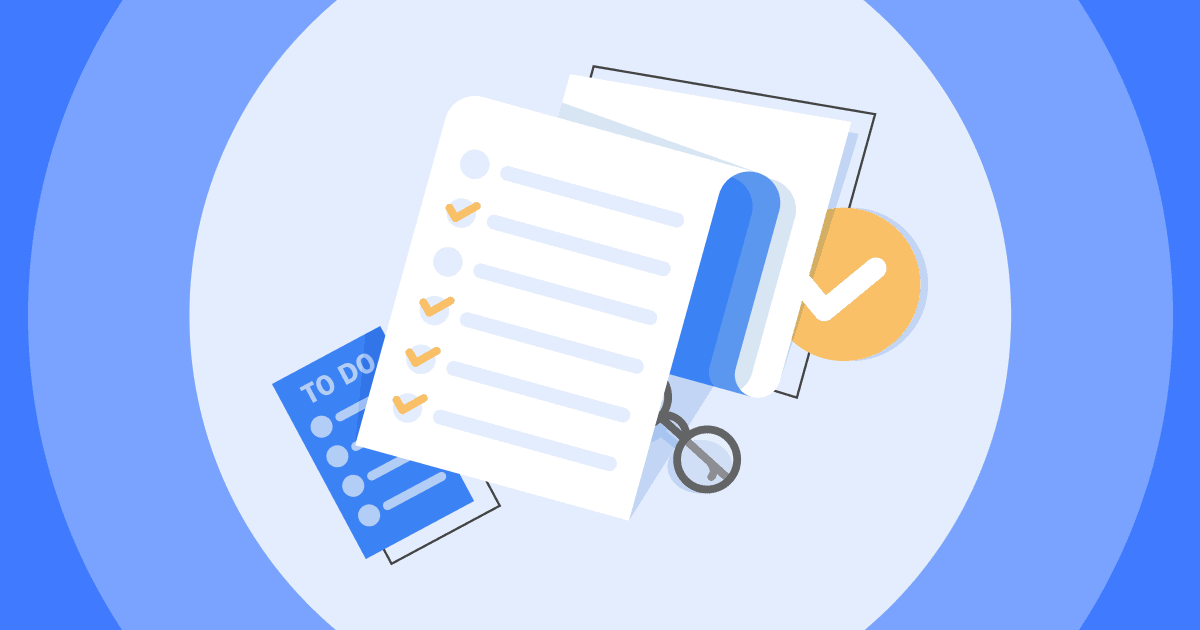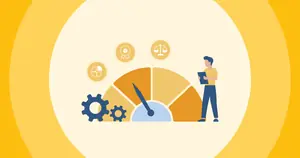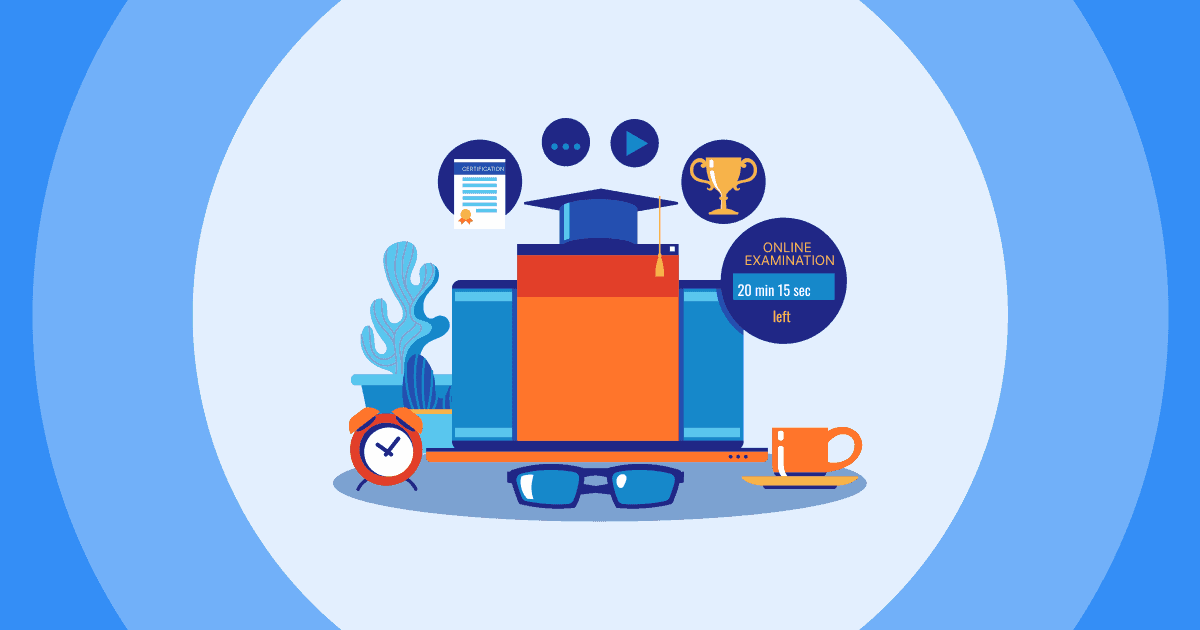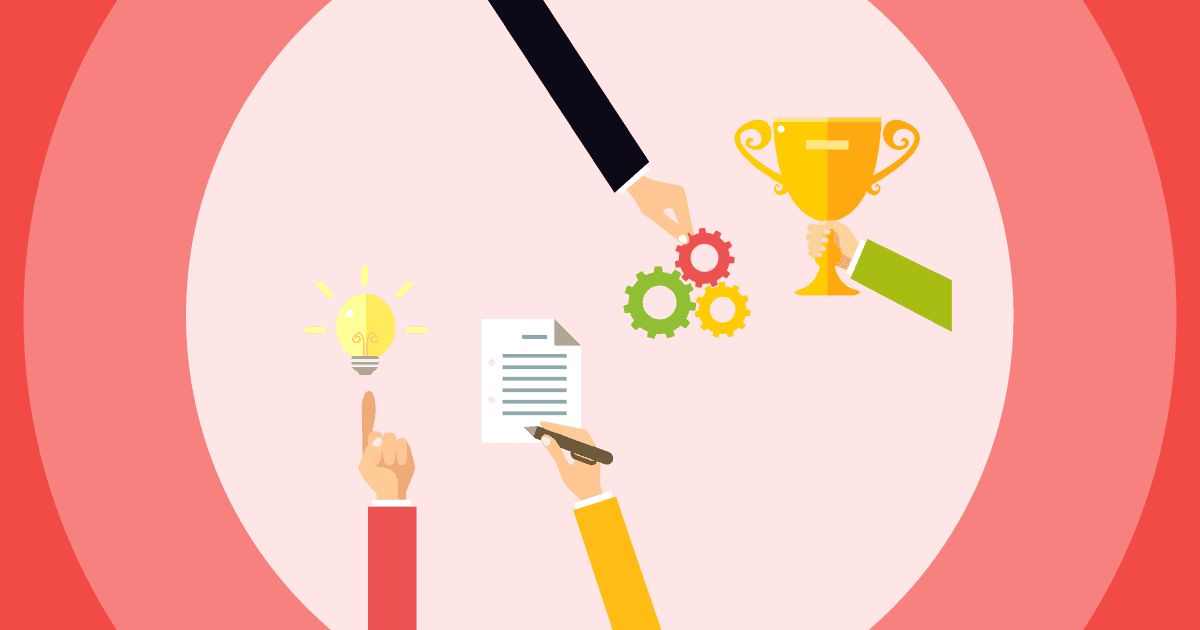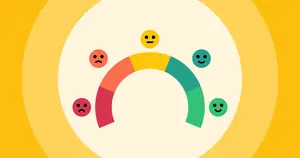Whether you're reviewing a new product, rating your teacher's class, or sharing your political views - chances are you've encountered the classic Likert scale before.
But have you ever stopped to think about how researchers use these things or what they can reveal?
We'll look at some creative ways people put the Likert scale questionnaires to use, and even how to design your own if you want actionable feedback✅
Table of Contents
- Examples of Likert Scale Questionnaires
- #1. Likert scale questionnaire for academic performance
- #2. Likert scale questionnaire about online learning
- #3. Likert scale questionnaire on consumer buying behaviour
- #4. Likert scale questionnaire about social media
- #5. Likert scale questionnaire on employee productivity
- #6. Likert scale questionnaire on recruitment and selection
- #7. Likert scale questionnaire on training and development
- How to Create Likert Scale Questionnaires
- Frequently Asked Questions
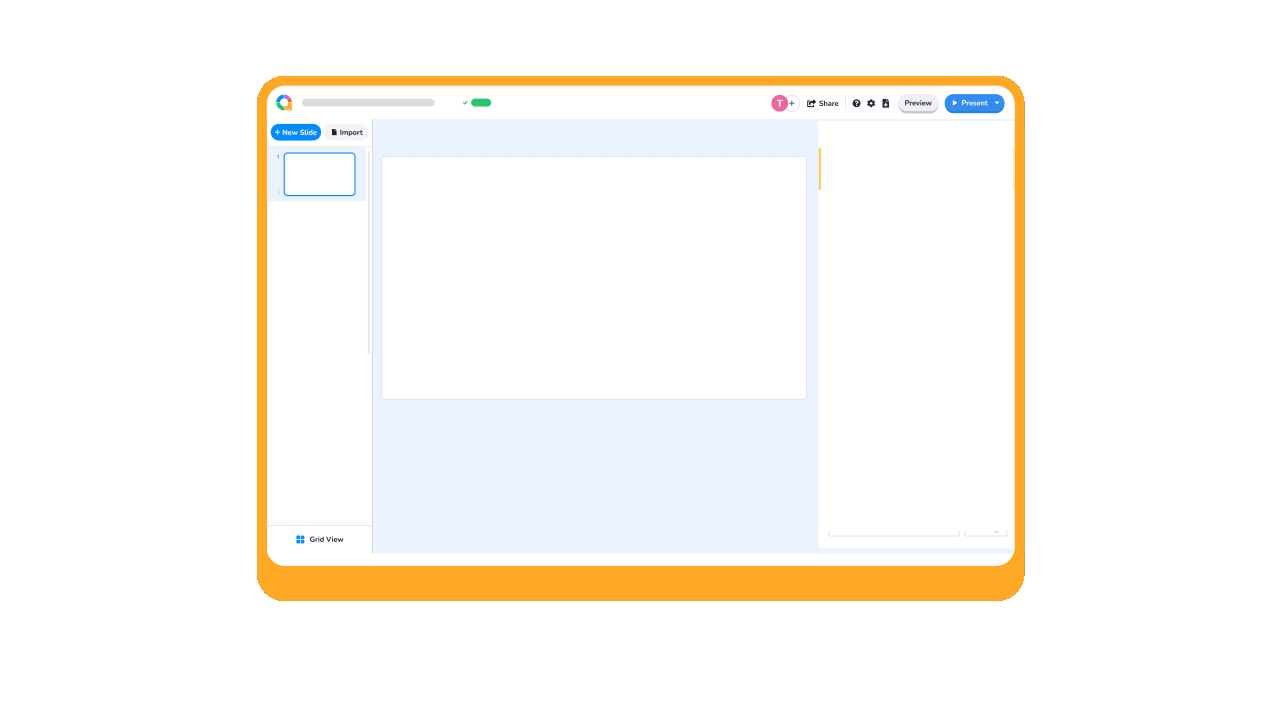
More Tips with AhaSlides
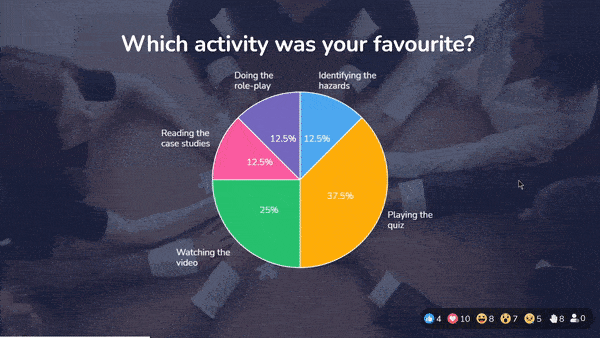
Create Likert Scale Surveys For Free
AhaSlides' polling and scale features make it easy to understand audience's experiences.
🚀 Grab Free Quiz☁️
Examples of Likert Scale Questionnaires
After you've explored all the simple steps, now it's time to see the Likert scale questionnaires in action!
#1. Likert scale questionnaire for academic performance
Knowing where you are will help you structure a proper study plan that targets your weaknesses and improves your strengths. See how you feel about how things are going grade-wise so far this term with this Likert scale questionnaire.

#1. I'm hitting the marks I set for my classes:
- No way
- Not really
- Meh
- Yeah
- You know it
#2. I'm keeping up with all the readings and assignments:
- Never
- Rarely
- Sometimes
- Often
- Always
#3. I'm putting in the time needed to succeed:
- Definitely not
- Nah
- Eh
- Pretty much
- 100%
#4. My study methods are effective:
- Not at all
- Not really
- Alright
- Good
- Amazing
#5. Overall I'm satisfied with my performance:
- Never
- Uh-uh
- Neutral
- Okay
- Absolutely
Scoring instruction:
"1" is scored (1); "2" is scored (2); "3" is scored (3); "4" is scored (4); "5" is scored (5).
| Score | Evaluation |
| 20 - 25 | Excellent performance |
| 15 - 19 | Average performance, needs to improve |
| <14 | Poor performance, needs a lot of improvements |
#2. Likert scale questionnaire about online learning
Virtual learning is not an easy thing to do when it comes to engaging the students. A post-class survey to monitor their motivation and focus would assist you in organising a better learning experience that fights "Zoom gloom".

| 1. Strongly disagree | 2. Disagree | 3. Neither agree nor disagree | 4. Agree | 5. Strongly agree | |
| The course materials were well-organised and easy to follow. | ☐ | ☐ | ☐ | ☐ | ☐ |
| Technical issues like slow internet speeds or broken links hindered my learning. | ☐ | ☐ | ☐ | ☐ | ☐ |
| I felt engaged with the content and motivated to learn. | ☐ | ☐ | ☐ | ☐ | ☐ |
| The instructor provided clear explanations and feedback. | ☐ | ☐ | ☐ | ☐ | ☐ |
| Group/project work was well-facilitated using online tools. | ☐ | ☐ | ☐ | ☐ | ☐ |
| Learning activities like discussions, assignments, and such helped reinforce learning. | ☐ | ☐ | ☐ | ☐ | ☐ |
| I utilised support services like online tutoring, and library resources as needed. | ☐ | ☐ | ☐ | ☐ | ☐ |
| Overall, my online learning experience met my expectations. | ☐ | ☐ | ☐ | ☐ | ☐ |
#3. Likert scale questionnaire on consumer buying behaviour
A product that resonates with the customers will gain a competitive edge - and there's no faster way to dive into their behaviours than spreading surveys! Here are some Likert scale questionnaires to study their buying behaviours.

#1. How important is quality when you shop?
- Not at all
- A little
- Sometimes
- Important
- Extremely crucial
#2. Do you compare different shops before buying first?
- Not at all
- A little
- Sometimes
- Important
- Extremely important
#3. Do other people's reviews sway your decisions?
- No influence
- A little
- Somewhat
- Pretty much
- Huge influence
#4. How much does price matter in the end?
- Not at all
- Not really
- Somewhat
- Pretty much
- Absolutely
#5. Do you stick with your favourite brands or are willing to try new things?
- Not at all
- Not really
- Somewhat
- Pretty much
- Absolutely
#6. What's the average time you spend on social media every day?
- Less than 30 minutes
- 30 minutes to 2 hours
- 2 hours to 4 hours
- 4 hours to 6 hours
- More than 6 hours
#4. Likert scale questionnaire about social media
Social media has been an integral part of our lives every day. By getting more personal, these questions could uncover new perspectives on how social media truly impacts behaviours, self-perception and real-world interactions beyond just usage.

#1. Social media is an important part of my daily life:
- Barely use them
- Sometimes check-in
- Regular habit
- Major time suck
- Couldn't live without
#2. How often do you post your own stuff?
- Never share
- Rarely hit post
- Occasionally put myself out there
- Regularly updating
- Constantly chronicling
#3. Do you ever feel like you need to scroll?
- Don't care
- Sometimes get curious
- Will check in often
- Definitely a habit
- Feel lost without it
#4. How much would you say social media impacts your mood on a daily basis?
- Not at all
- Rarely
- Sometimes
- Often
- Always
#5. How likely are you to buy something just because you saw an ad for it on social?
- Very unlikely
- Unlikely
- Neutral
- Likely
- Very likely
#5. Likert scale questionnaire on employee productivity
There are many factors that could affect an employee's productivity. As an employer, knowing their pressure points and work expectations would help you provide more focal support to individuals in specific roles or teams.

#1. I understand what is expected of me to meet my job responsibilities:
- Strongly disagree
- Disagree
- Neither agree nor disagree
- Agree
- Strongly agree
#2. I have the necessary resources/tools to do my work efficiently:
- Strongly disagree
- Disagree
- Neither agree nor disagree
- Agree
- Strongly agree
#3. I feel motivated in my work:
- Not at all engaged
- Slightly engaged
- Moderately engaged
- Very engaged
- Extremely engaged
#4. I feel pressured to keep up with my tasks:
- Strongly disagree
- Disagree
- Neither agree nor disagree
- Agree
- Strongly agree
#5. I'm satisfied with my outputs:
- Very dissatisfied
- Dissatisfied
- Neither satisfied nor dissatisfied
- Satisfied
- Very satisfied
#6. Likert scale questionnaire on recruitment and selection
Getting candid feedback on pain points and what really stood out could provide valuable first-hand perspectives to strengthen the candidate experience. This example of a Likert scale questionnaire could provide insights into recruitment and selection processes.

#1. How clearly was the role explained?
- Not at all clear
- Slightly clear
- Moderately clear
- Very clear
- Extremely clear
#2. Is it easy to find the role and apply on our website?
- Not easy
- Slightly easy
- Moderately easy
- Very easy
- Extremely easy
#3. Communication about the process was timely and clear:
- Strongly disagree
- Disagree
- Neither agree nor disagree
- Agree
- Strongly agree
#4. The selection process accurately assessed my fit for the role:
- Strongly disagree
- Disagree
- Neither agree nor disagree
- Agree
- Strongly agree
#5. Are you satisfied with your candidate experience overall?
- Very dissatisfied
- Dissatisfied
- Neither satisfied nor dissatisfied
- Satisfied
- Very satisfied
#7. Likert scale questionnaire on training and development
This Likert scale questionnaire can be used to understand employee perceptions of critical aspects of training needs. Organisations can use results to identify strengths and areas for improvement in their training and development programs.

| 1. Strongly disagree | 2. Disagree | 3. Neither agree nor disagree | 4. Agree | 5. Strongly agree | |
| Training needs are identified based on individual and organisational goals. | ☐ | ☐ | ☐ | ☐ | ☐ |
| I am provided with sufficient training to do my job well. | ☐ | ☐ | ☐ | ☐ | ☐ |
| Training programs are designed to address identified needs. | ☐ | ☐ | ☐ | ☐ | ☐ |
| Training delivery methods (e.g. classroom, online) are effective. | ☐ | ☐ | ☐ | ☐ | ☐ |
| I am given enough time during work hours to attend training programs. | ☐ | ☐ | ☐ | ☐ | ☐ |
| Training programs effectively improve job skills and knowledge. | ☐ | ☐ | ☐ | ☐ | ☐ |
| I am offered opportunities for career development. | ☐ | ☐ | ☐ | ☐ | ☐ |
| Overall, I am satisfied with the training and development opportunities. | ☐ | ☐ | ☐ | ☐ | ☐ |
How to Create Likert Scale Questionnaires
Here are 5 simple steps to creating an engaging and quick survey using the Likert scale questionnaires on AhaSlides. You can use the scale for employee/service satisfaction surveys, product/feature development surveys, student feedback, and many more👇
Step 1: Sign up for a free AhaSlides account.

Step 2: Create a new presentation or head to our 'Template library' and grab one template from the 'Surveys' section.

Step 3: In your presentation, choose the 'Scales' slide type.

Step 4: Enter each statement for your participants to rate and set the scale from 1-5, or any range you prefer.

Step 5: If you want them to do it right away, click the 'Present' button so they can access your survey through their devices. You can also head to 'Settings' - 'Who takes the lead' - and choose the 'Audience (self-paced)' option to gather opinions anytime.

💡 Tip: Click on the 'Results' button will enable you to export the results to Excel/PDF/JPG.
Frequently Asked Questions
What is a Likert scale in questionnaires?
A Likert scale is a commonly used scale in questionnaires and surveys to measure attitudes, perceptions or opinions. Respondents specify their level of agreement to a statement.
What are the 5 Likert scale questionnaires?
The 5-point Likert scale is the most commonly used Likert scale structure in questionnaires. The classic options are: Strongly Disagree - Disagree - Neutral - Agree - Strongly Agree.
Can you use a Likert scale for a questionnaire?
Yes, the ordinal, numerical and consistent nature of Likert scales makes them ideally suited for standardized questionnaires seeking quantitative attitudinal data.
